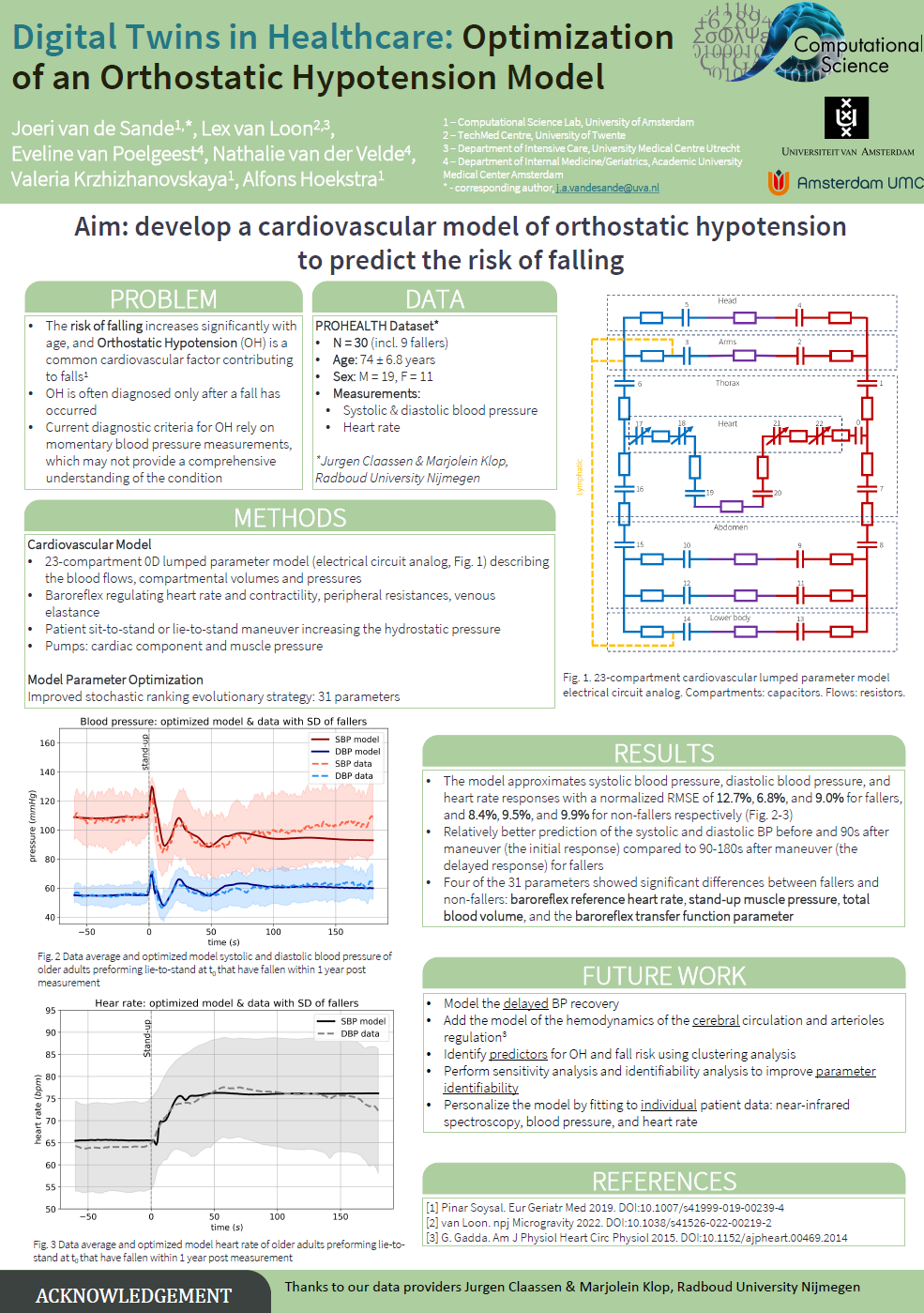WSAA Best Poster Awarded to Joeri van de Sande!
For his work on data fitting methods for orthostatic hypotension models. The prize includes a travel grant, enabling him to attend the prestigious EFAS Congress (European Federation of Autonomic Societies). Joeri’s research aims to support clinicians by developing improved diagnostic tools for orthostatic hypotension, particularly in relation to fall risk.
About the poster and the work developed

About this work and poster
This research presents a cardiovascular digital twin model designed to predict fall risk in older adults by simulating orthostatic hypotension, addressing the critical gap where this condition is often diagnosed only after falls occur.
The study used a 23-compartment lumped parameter model with baroreflex regulation to simulate cardiovascular responses during postural changes (sit-to-stand or lie-to-stand maneuvers), optimizing 31 model parameters using an improved stochastic ranking evolutionary strategy.
When validated against the PROHEALTH dataset of 30 participants (including 9 fallers, average age 74 ± 6.8 years), the model achieved impressive accuracy with normalized RMSE values of 12.7%, 6.8%, and 9.0% for systolic blood pressure, diastolic blood pressure, and heart rate respectively in fallers.
When validated against the PROHEALTH dataset of 30 participants (including 9 fallers, average age 74 ± 6.8 years), the model achieved impressive accuracy with normalized RMSE values of 12.7%, 6.8%, and 9.0% for systolic blood pressure, diastolic blood pressure, and heart rate respectively in fallers.
The research identified four key parameters that distinguished fallers from non-fallers: baroreflex reference heart rate, stand-up muscle pressure, total blood volume, and a baroreflex transfer function parameter, with better prediction accuracy observed for the initial response (0-90s) compared to delayed response (90-180s) in fallers.
This work represents a significant advancement toward predictive cardiovascular modeling in geriatric care, potentially enabling early intervention strategies to prevent falls before they occur through personalized medicine approaches that could transform orthostatic hypotension diagnosis and management.


